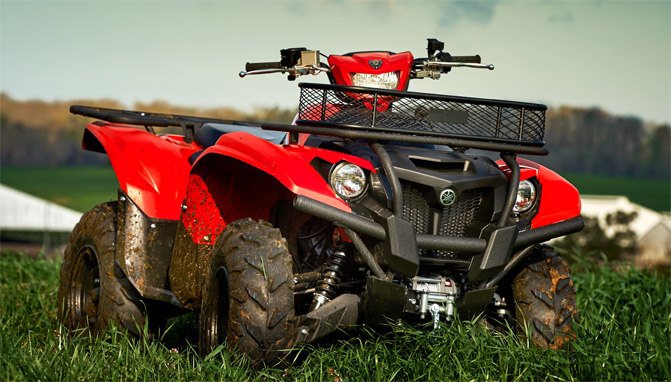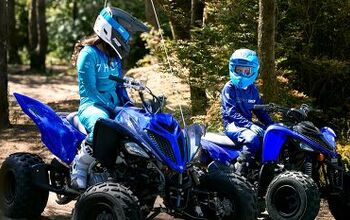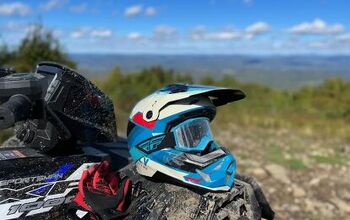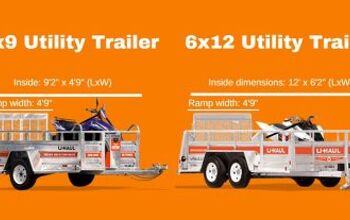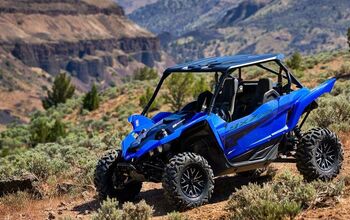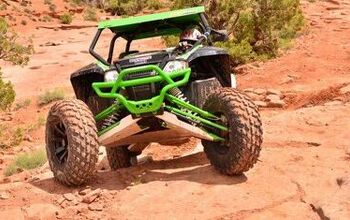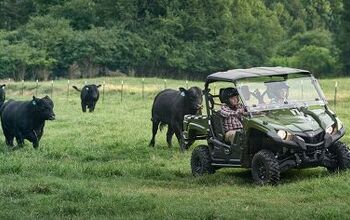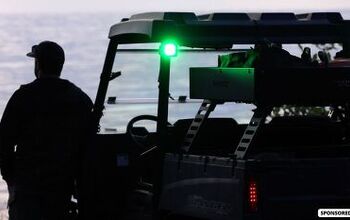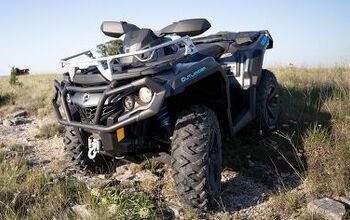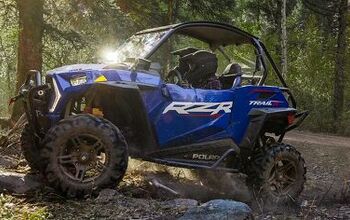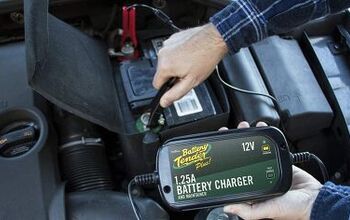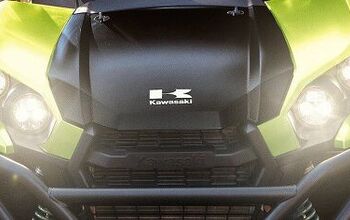How To Choose the Right ATV
The best news for potential ATV buyers is that today there are more ATV choices than ever before, which means you can get the perfect machine for your riding style and intended use. However, the wide selection does make whittling down your options more difficult.
Buying an ATV is a big investment and shouldn’t be taken lightly. Since today’s four-wheelers generally have good long-term durability, they will last several years.
With a little research, you can go into a dealership fully armed with the info you need to choose the right ATV for your needs. Your ultimate goal should be to buy a machine that not only fits you just right and is easy to ride, but also has plenty of power for your needs, a comfortable suspension system, the appropriate ‘thrill factor’ and all the features you’ll need for getting any chores done.
Most of models of ATV can be classified into one category, although there are many models that cross over into more than one classification because of certain features. In fact, the lines between some of the categories have begun to blur in the last decade as nearly all of the manufacturers have designed their utility models with considerably more performance for those riders who want to get the complete ATV experience (work and play) from one machine.
Youth ATVs are basically smaller, lighter and less-expensive versions of the adult models. Nearly all of them are designed for play and recreational trail riding with the family, yet some models can be quite competitive in the youth division racing in stock form.
In this category, there are a number of lesser-known brands that offer mini machines, many of them designed and built in foreign countries. As a result, the price range and difference in quality tends to vary more than other categories. Engine sizes range from 50cc to 125cc.
This class is the next step up from youth models as far as size and price go. Some also call this category the ‘recreational trail class.’ These machines are designed to be easy to ride with fairly tame handling manners and powerplants. Some machines feature automatic transmissions, while others require shifting, but no clutch to operate.
These machines are a great starting point for people who have never ridden off-road vehicles before. Another group of riders that prefer four-wheelers from this class are those who are physically smaller than the typical adult riders who prefer to keep their speed at a casual pace. Yet tough trail situations, such as overcoming big mud bogs or boulder fields, quickly tax these machines beyond their limits.
Utility ATVs are by definition designed primarily for heavy-duty work, such as hauling cargo on the front and rear racks, pulling a trailer or farm implement or pushing a plow blade. That’s why these machines have become so popular among people who own large amounts of land.
A number of industries, law enforcement officers and service personnel also use this type of ATV, and they’ve been a favorite of hunters, campers and fisherman since their inception in the mid-1980s.
Utility quads have typically been regarded as sluggish-handling behemoths with slow, but powerful, engines and a limited amount of suspension travel. But that has changed. Today, utility four-wheelers are built to be fun and comfortable on the trails. When the going gets rough in the mud, rocks or steep hillclimbs, modern utility quads typically come through like champs. They have a high ground clearance and get great traction.
There also dozens of extra features that can be found on utility quads, such as storage boxes, auxiliary electrical outlets, removable headlights, independent rear suspension and liquid-cooled engines.
The sport utility category has probably done more than any other to increase the popularity of four-wheelers. These machines combine the working capabilities of utility quads with the sporting characteristics of the performance and racing ATVs. Because of their flexibility, these machines are offered in a wide array of models offered year after year and are often the best sellers.
Sport utility quads can be looked at basically in two different ways: You can describe them as sport machines with racks, a trailer hitch and 4WD or you could say they’re utility quads with faster engines and longer travel suspension. In fact, when you look under the skin of many of these sport utility ATVs, you’ll find that the manufacturers actually based their original designs for these quads on already existing sport or utility models.
The best part of these machines is that you literally can spend the morning mowing the lawn with your quad and then take the same machine out for a fast afternoon trail ride, tackling jumps and churning out big broadslides.
The machines that fit into this category were built with one goal in mind: fun! Sport ATVs typically feature peppy engines, long-travel suspension, a relatively light overall weight and great handling for both the track and trail. Sport four-wheelers are great at jumping, hitting the rough stuff, sliding around corners and popping wheelies. Experienced riders can fly down the trails at a quick pace that keeps them on their toes and gives them plenty of exercise.
Sport quads also have a racier, more aggressive look to them when compared to utility or sport utility ATVs. In fact, modified sport quads are popular in the beginner classes at motocross and TT races and can be raced nearly stock in cross-country events.
Most sport four-wheelers rely on a five-speed transmission with a manual hand-controlled clutch. This makes them more challenging to ride than the automatic models, but in the long run the shifting skills you’ll learn riding them will come in quite handy if you ever want to go racing or step up to a machine in the high-performance category.
This class has diminished greatly over the past few years, but a wide variety of options exists on the used market.
Two-Up ATVs started appearing on the scene in 2002. Canadian manufacturer Bombardier, now Can-Am, first introduced this type of ATV and both Arctic Cat and Polaris have followed suit.
Two-Up ATVs typically feature a slightly longer wheelbase for added stability, a second, slightly raised seat with grab bars for the passenger and a second set of floorboards or footpegs.
To keep engines from overheating, air-cooled powerplants rely on the simple and age-old method of having external cooling fins built right on to the cylinder. The engines are usually positioned in the ATV so that as much air as possible flows over the cooling fins while the quad is in motion.
Liquid-cooled systems (also known as water-cooled, even though the coolant is actually a mixture of anti-freeze and water) are considerably more efficient at keeping the engine temperatures down. The system works by flowing the liquid coolant from a radiator mounted on the frame to the hollow channels surrounding the cylinder. It’s pretty much the same setup that you’ll find in cars. Many ATVs also have an auxiliary fan that blows on the radiator to further cooling. The fan comes in handy when the quad is traveling at slow speeds, such as during lawn mowing or farm implement work.
A cooler-running engine is better in several ways. One is that power delivery stays consistent and strong; another is that the overall life of the engine is increased, as well as the time span between overhauls. Overheated engines strain parts and decrease the effectiveness of the engine lubricants. Also, a hot ATV engine can be quite a nuisance for the rider, especially when your quad radiates heat right onto your legs.
The vast majority of sport/utility quads now feature electronic fuel injection (EFI), similar to the systems found in cars. One of the most noticeable advantages of EFI is that there is no manual choke, which eliminates troublesome starting in cold weather or when the engine is overheated. With EFI, computer sensors tell the system how much fuel to send into the carburetor, thus allowing the engine to work to its full potential even when there are drastic changes in elevation or temperature.
Single-cylinder engines powered the overwhelming majority of four-wheelers for many years, but two-cylinder quads are now readily available. The first twin-cylinder quad was the Kawasaki Prairie 650, which came out as a 2002 model.
The advantage of a twin-cylinder motor is that it provides more power over a single cylinder of the same displacement. They also rev quicker than a single. However, twin-cylinder engines are considerably bigger and heavier.
The majority of four-wheelers sold today feature completely automatic transmissions. They are literally as simple as driving a car. Most consist of a variable clutch, belt-drive system similar to that found on snowmobiles. However, some of the manufacturers have gone in a different direction with their auto transmissions by designing complex, internal gear-driven systems. The gear-driven systems are a bit heavier and more expensive to make, but are also more reliable and won’t get flooded during deepwater crossings. Belt-drives also emit quite a bit of heat in the summer.
The two kinds of manual transmissions used in modern quads are the traditional five- or six-speed with a manual clutch or a system with an automatic clutch. The manual clutch is used on virtually all racing ATVs and dirt bikes.
With this clutch, you shift with your left foot while your left hand controls the clutch; the advantage is that you can precisely control engine rpm and traction. It takes some skill to really do this, but it’s the reason why expert trail riders and racers prefer this setup to an auto tranny.
Chain-drive ATV systems have two advantages over shaft-drives—they’re lighter and less expensive to make. You can also change overall gear ratios quite easily by changing either the front or rear sprocket, but that’s usually a concern only for racers.
However, chain drives require more maintenance (chain tightening and chain and sprocket replacement) and decrease ground clearance. As a result, they are especially vulnerable in extreme muddy or rocky conditions.
Shaft-driven quads require little or no maintenance to the final drive system. Almost all current 4WD quads have shaft-drive front and rear, as do most of the sport utility wheelers. The majority of sport quads utilize chain drive.
ATV rear suspension systems can be broken down into two primary categories: single-shock, swingarm-style with a straight axle and completely independent with single or double A-arms. The independent system is typically referred to as IRS (independent rear suspension). A generalization is that most sport and high-performance quads utilize a swingarm and straight axle while most utility and sport utility ATVs have IRS. Very few of the kid quads and budget-minded entry-level machines feature IRS (which ads weight and cost to the vehicle).
With IRS, each rear wheel moves independently of the other, just like in the front. When traversing large obstacles, the IRS system keeps the quad more level and stable than if it had a straight axle. While blazing down the trail, the IRS quad almost always delivers a smoother ride. The downside is that an IRS quad loses some of its finesse in the corners.
Most quads today feature the superior disc brake systems. Simply put, they stop better, last longer and work much better in muddy and wet conditions. In the winter, you won’t have any problems with discs freezing up while drum brakes can get water inside that freezes after you put the machine away. In the early days of ATVing, only the high-performance machines sported disc brakes, but now many of the utility and sport utility machines do as well.
A big question many ATV buyers have is whether to get a two-wheel or four-wheel drive. It basically comes down to how extreme the terrain is that you’ll be using it in. Four-wheel drive quads can do a much better job getting through muddy sections, climbing steep hills, crawling over big obstacles—such as logs and rocks—and navigating deep water holes. Four-wheel-drive ATVs can also plow more snow, carry more cargo and pull bigger farm implements and trailers.
Nearly every four-wheel-drive ATV has a button that allows the operator to switch back and forth from two- to four-wheel drive on the fly. Some ATV four-wheel drive systems have sensors that automatically switch the ATV to four-wheel-drive mode when it feels the need for front-wheel drive.
Almost all four-wheel-drive quads feature a limited-slip front differential that shares the power with the wheel that needs it the most (the one that is getting traction), rather than having the wheel that is slipping (up in the air perhaps), spinning wildly like it would on a machine with an ‘open’ differential. One step above limited-slip is torque-sensing differential, which does an even better job of getting power to the wheel getting the most traction.
A feature you may see on a four-wheel drive quad in combination with either of the two differentials described above is a front differential lock. This is used when the rider is in a situation where he or she may be getting stuck, usually in deep thick mud. Engaging this feature progressively ‘locks’ the two front wheels and gives them both full power to get out of the situation. So if a locked front end is the best for extreme terrain, why not always leave it locked? Well, the steering gets extremely difficult, which is why most four-wheel drives spend most of their time being operated in the limited-slip or torque-sensing mode.
Electronic Power Steering (EPS) is not offered on the majority of Utility and Sport-Utility ATVs. This comes at a cost (around $1000 on a new machine), but it saves your arms and shoulders considerable strain over a long day’s ride.
Buying a used four-wheeler can save you a lot of dough. However, given the nature of off-road riding, many used ATVs will have taken quite a beating before they show up in the classifieds.
With that in mind, always figure out how much you’ll need to spend to get a used ATV in good, reliable condition. Take the following checklist with you when you go to take a look at a used machine.
- Raise the ATV with the help of a friend and stand it on the rear grab bar, so you can inspect the undercarriage for any serious dents or damage.
- Look closely at the frame, especially the shock mounts, A-arm mounts and intersections of frame components for any signs of rust or cracks.
- On 4×4 ATVs, inspect the CV joint boots. They should be in excellent condition. Any crack or tears will allow water and dirt to enter and could lead to costly repairs.
- Also on 4×4 ATVs, if possible, remove the front and rear differential inspection plugs. If the gear lube looks like chocolate milk, the oil is contaminated with water and there could be damage to the bearings.
- Check the ATV’s engine oil to see whether it looks contaminated.
- Shine a flashlight into the gas tank and look for rust. Yes, a gas tank can rust, and rust can cause carburetor problems.
- Raise the ATV and support the front end with jack stands. Then try to move each front wheel in and out from top to bottom and side to side to check for worn wheel bearings and ball joints. Do the same for the rear.
- With the ATV on the ground, move the handlebars back and forth. This will identify worn tie rod ends.
- Remove the seat and take the air box lid off. An air box can collect water and damage an engine.
- Check all headlights, taillights, the engine shut-off switch and key switch. Check that the lights and gauges on the dash work.
- Check that the hand, foot and parking brakes all operate smoothly. Check for damaged or cracked cables.
- Check the exhaust. Is there oil dripping out of it? Has the spark arrestor been removed? Almost every state and national forest requires that you have one.
- Check for worn-out tires or tires full of plugs. These really aren’t a problem, but worn tires or plugs could be a negotiating point on price.
- Look closely at the front or rear sprockets. Each point should be uniform. If they are worn more on one side or have a hooked appearance, a new chain and sprocket set is in order.
- How easily does the ATV start? Any hesitation in starting could be as simple as a carburetor out of adjustment, a dirty carb that needs cleaning or a worn out spark plug, a clogged air filter or something more serious. You should also pay attention to if you see any noticeable smoke appears when the engine starts or if there is excessive smoke as you apply more throttle.
- Take a test ride. Check how smoothly the ATV starts to move; a hesitation or jerking here could mean big problems. Whether it’s an automatic or manual transmission, check how well it shifts into the various gear or drive modes. Do the handlebars turn easily? If the engine speed increases while turning, the cables could be routed improperly. Also, smoothly apply each of the hand and foot brakes separately. How do they sound and are they effective? It could be more than just brake pads. The drums or rotors could be badly worn or scored beyond safe use.
- After you buy a used machine, it’s a good idea to change all the fluids.
We are committed to finding, researching, and recommending the best products. We earn commissions from purchases you make using the retail links in our product reviews. Learn more about how this works.
More by ATV.com Staff



